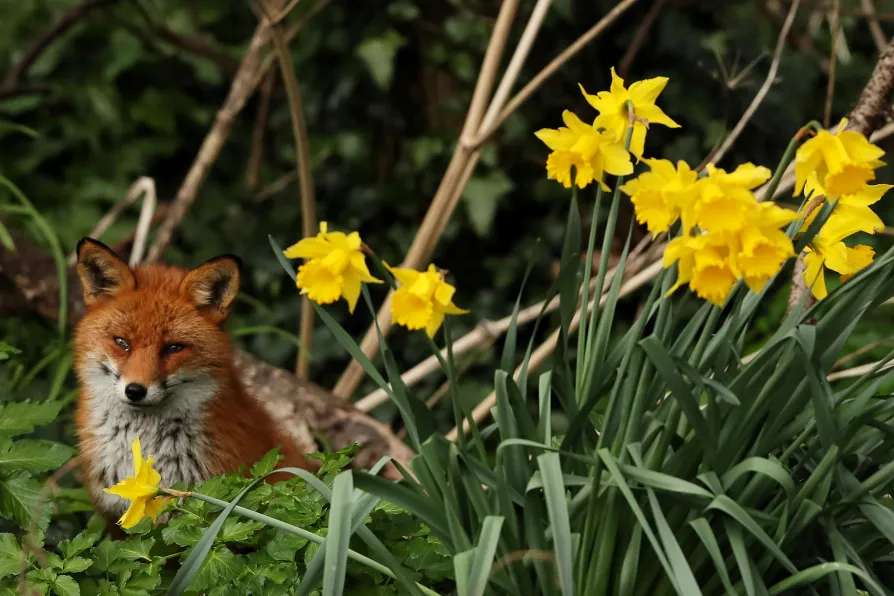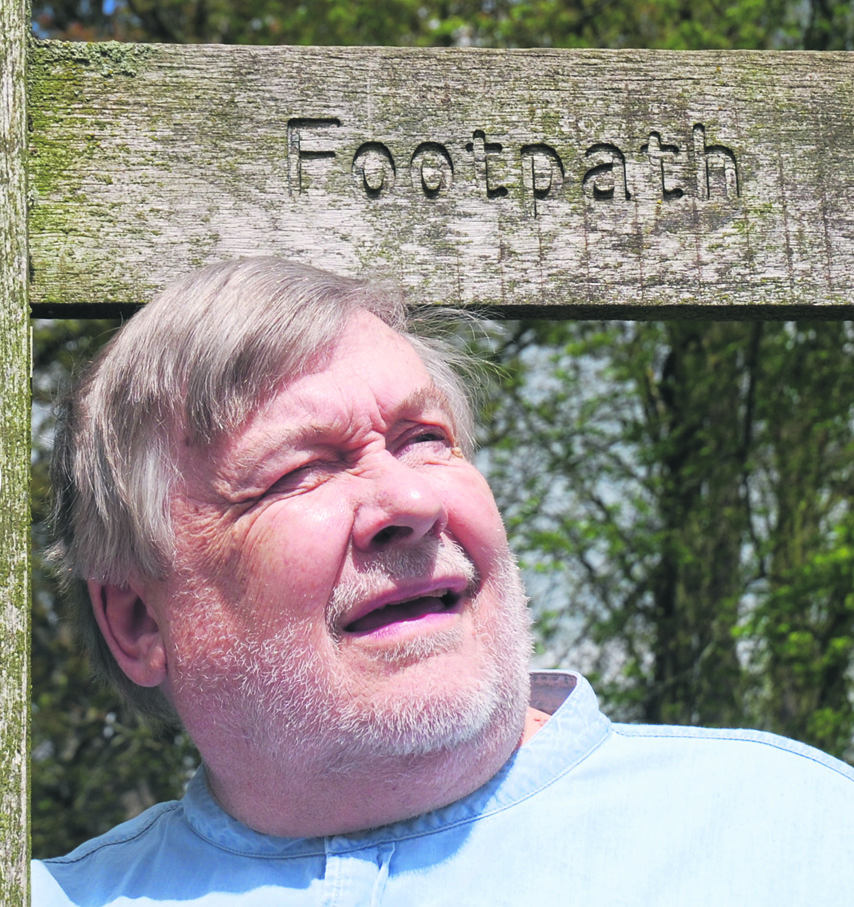Durham Miners’ Association general secretary ALAN MARDGHUM speaks to Ben Chacko ahead of Gala Day 2025


EVEN in lockdown it is amazing what wildlife you can see from your window — or on your single jog or walk of the day.
Even the smallest garden patch or perhaps a tree on the pavement outside your house will be welcoming feathered visitors — and at this time of year those visitors will be wearing their brightest colours in the search for a mate before they start building a nest.
If you can rig up a bird table, wonderful, but a bunch of dead seed-heads simply collected on your walk of the day and hung up outside beside a window will attract some birds for sure.
It isn’t just birds. A mate of mine who lives in San Francisco tells me that they are in lockdown too, so the usually shy coyotes — wild dogs of the desert — have taken to ranging through deserted city streets.
I am sure sightings of our own “wild dog” — the red fox — will become more common as streets get more deserted.
Did you know that fox population densities are now far higher in cities than anywhere in the British countryside?
London, for instance, has 18 foxes per square kilometer and Bristol has 16.
They feed mostly on the numerous rats and mice that also make their homes in our cities and towns.
Most of us will be content to spot a few birds and it is easy to find websites to help identify common and not-so-common town and city birds.
Here are some the birds you might be lucky enough to see. Let’s start with one we all know, if only from Christmas cards.
Tuneful voices, a cheeky attitudes and a bright red breast, have endeared robins to us all. But don’t be fooled — they are aggressively territorial and can be quite vicious.
The wren is a tiny brown bird, usually seen foraging at the corners of the garden between paving slabs for tiny spiders and insects.
It is dumpy, almost rounded, with a fine bill, quite long legs and toes, very short round wings and a short, narrow tail. It has a remarkably loud voice.
Huge flocks of smallish black birds wheeling in the sky are characteristic of the starling. Close up it has glossy black plumage with an amazing metallic sheen. Its pink legs and a bill that is yellow in summer but black in winter make it easy to recognise. It is a fine mimic too.
The scruffy house sparrow is one of Britain’s most well-known and best-loved birds — although it isn’t as common as it once was.
Males have a grey head and black bib with chestnut sides and white cheeks. The female has pale brown feathers all over with a pale stripe behind the eye.
Dunnocks are often overlooked or confused with house sparrows — not only are they small, brown and grey with a slender beak, but they also creep under bushes like a mouse searching for insects and spiders.
Blackbird males are indeed black — but confusingly female blackbirds are brown. The bright orange-yellow beak and eye-ring make adult male blackbirds one of our most striking birds.
One for sorrow, two for joy — the magpie might appear black and white, but close up it has a subtle blue and green sheen. It is a noisy bird with a harsh, chattering call.
Six tit species breed in Britain, great, blue, coal, marsh, crested and willow. A good website or book will let you sort them out. Just to confuse things “the long-tailed tit” isn’t actually a tit at all.
Now some finches. Colourful birds, goldfinches have a distinctive scarlet face and bright-yellow wing patch. A dashing and delicate bird, these seed-eating finches visit dried bird feeders and tables sometimes in flocks.
The chaffinch is a familiar sight. The male has a smart blue-grey hood and a pink face and breast. The female is brown and buff and both have black and white markings on their wings.
The twittering and wheezing song of the greenfinch and its splash of yellow and green as it flies make it a cheerful visitor.
The colourful bullfinch is large for a finch round in shape with a large, robust bill. Males and females have a black cap that extends forward around the bill, a grey back, black wings, black tail and white rump. Male under parts are bright pinkish-red female’s pinkish-grey.
San Francisco might have coyotes but I have noticed traffic-free streets are now often picked over by pied wagtails looking for small insects and spiders enjoying the sun-warmed tarmac. This wagtail is declining and nests in Britain and virtually nowhere else.
Once you get a taste for bird-watching why not specialise?
Did you know that as well as the common feral London pigeon (found not just in London), there are at least a score of other pigeons and doves now native to Britain?
Several good websites will take you deep into this fascinating world. Being a real ornithologist isn’t always hard: for instance, if you see a dove (a slim pigeon) with a collar marking, it is a collared dove — now wasn’t that easy?
Never forget to look upwards. Last time I was in Bow — visiting the offices of a certain well-known newspaper and of course before the virus lockdown — at about 4pm I heard the characteristic honking sound made by a V-shaped skein of about 60 pink-footed geese.
This winter visitor to Britain feeds on our wetland and fields. This skein were returning home to their roost near the east London reservoirs.
More than a third of a million individuals winter here. They arrive from Greenland and Iceland in October and head back north about now.
Also looking up, you might be lucky enough to see one of our magnificent birds of prey, perhaps one of the increasingly common red kites that inhabit our skies.
In medieval London they plucked the eyes from criminal’s heads impaled on the spikes of London Bridge.
In recent years peregrine falcons have taken to nesting in tall town and city buildings rather than the cliffs that they used to call home.
If you do spot a peregrine you can marvel at the fact that this is the fastest-moving animal on earth.
Diving to catch its prey midair, it has been clocked a over 231mph. Cheetahs, the next-fastest animal, can only manage just under 60mph.
The most likely birds of prey you might see, particularly if you have a bird table, are sparrow-hawk, tawny owl and most common, the kestrel.
In recent years these three species have learnt that small bird tables are great places to hunt small birds — logical really.
I am lucky to have a tiny garden and last year when I wanted a small pond I bought an old tin bath. Filled with water and a few plants, sure enough it attracted frogs not long after we installed it.
This spring it is already alive with insects and the small spiky plants make an ideal place for dragonflies, damselflies and other insects to pull themselves out of the water to dry their wings after emerging from their underwater nymph stage.
I am hoping that frogs, toads or even a newt might bless us with some spawn so we can observe their amazing life cycles, all subtlety different, from mating, spawn, tadpoles, tiny frogs or toadlets leaving for dry land.
Even a clean plastic washing-up bowl allowed to fill with rainwater will attract wildlife and an island or raft will allow small garden birds to drink or even shower.
Small birds splashing and washing is a sight guaranteed to bring smile to your face — even in lockdown.
One new bit of wildlife you won’t be able to see is the coronavirus. This troublesome “beast” is so small that to see it you will need a half-decent field emission scanning electron microscope. If you are interested they costs about a million quid.
Keep well!



















